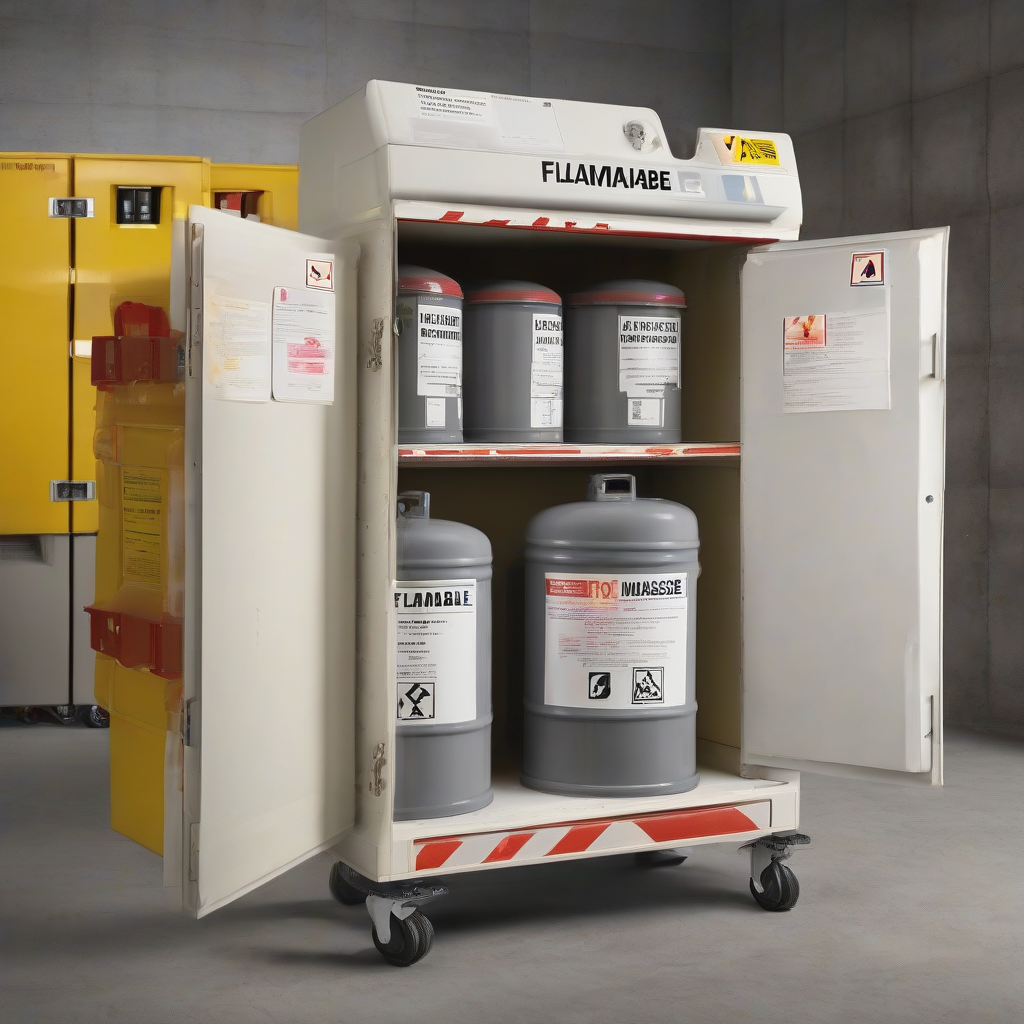Flammable Storage Cabinets: A Comprehensive Guide to Safety and Compliance
Flammable storage cabinets are essential safety equipment in any workplace that handles flammable and combustible materials. These cabinets provide a secure and controlled environment to store these hazardous substances, minimizing the risk of fire and protecting workers and the surrounding environment. This guide delves into the crucial aspects of flammable storage cabinets, covering their design, features, regulations, and best practices for safe usage.
Understanding Flammable and Combustible Materials
Before diving into the specifics of storage cabinets, it’s crucial to understand the difference between flammable and combustible materials. Flammable materials ignite easily and burn rapidly, while combustible materials require more energy to ignite but can still pose a significant fire hazard. The classification of a material dictates the type of storage cabinet required.
- Flammable liquids: Liquids with a flash point below 100°F (37.8°C).
- Combustible liquids: Liquids with a flash point at or above 100°F (37.8°C) but below 200°F (93.3°C).
- Flammable solids: Solids that are readily combustible, often reacting with air or water to ignite.
- Combustible solids: Solids that burn readily, but not as rapidly as flammable solids.
Design and Features of Flammable Storage Cabinets
Flammable storage cabinets are designed with specific features to mitigate fire risks. Key design elements include:
- Self-closing doors: Automatically close in case of fire, preventing the spread of flames.
- Spring-loaded or self-latching doors: Ensure doors remain securely closed, even during minor impacts.
- Fire-resistant construction: Made of materials that can withstand high temperatures for a specified period, preventing ignition and containing the fire.
- Ventilation: Proper ventilation prevents the build-up of flammable vapors, which could lead to explosions.
- Spill containment: A sump or tray at the bottom catches spills, preventing leakage and minimizing the risk of fire spread.
- Grounding: Cabinets are often grounded to prevent static electricity buildup, a potential ignition source.
- Labels and markings: Clearly labeled with warnings and hazard information.
- Material compatibility: The cabinet’s construction must be compatible with the stored materials to prevent chemical reactions.
- Capacity: Cabinets are available in various sizes to accommodate different storage needs.
- Shelving: Adjustable shelves allow for flexible storage of various containers.
Types of Flammable Storage Cabinets
Several types of flammable storage cabinets cater to various needs and regulatory requirements:
- Type I: Provides 30-minute fire protection.
- Type II: Offers 1-hour fire protection.
- Type IV: Designed for storing certain types of corrosive materials.
- Security cabinets: Combine fire protection with enhanced security features like locks and tamper-evident seals.
- Outdoor cabinets: Designed to withstand outdoor elements.
Safety Regulations and Compliance
The use and installation of flammable storage cabinets are governed by various regulations, including:
- NFPA (National Fire Protection Association): NFPA standards provide detailed guidelines on the safe storage and handling of flammable and combustible materials. NFPA 30 is a particularly important standard related to flammable and combustible liquids.
- OSHA (Occupational Safety and Health Administration): OSHA regulations mandate the implementation of safety measures to protect workers from hazards associated with flammable and combustible materials. They often reference NFPA standards.
- Local fire codes: Local jurisdictions may have specific requirements that must be met.
Compliance with these regulations is crucial to prevent accidents and ensure a safe working environment. Regular inspections and maintenance are essential to ensure continued compliance.
Selecting the Right Flammable Storage Cabinet
Choosing the appropriate flammable storage cabinet requires careful consideration of several factors:
- Type of materials stored: The cabinet’s fire rating and construction must match the flammability characteristics of the stored substances.
- Quantity of materials: The cabinet’s capacity should be sufficient to accommodate the volume of materials stored.
- Location: The cabinet’s placement should be easily accessible but also in a location that minimizes the risk of fire spread.
- Budget: Various models are available at different price points.
- Manufacturer reputation: Choosing a reputable manufacturer ensures quality and compliance.
Proper Usage and Maintenance
Even with the best cabinet, safe storage practices are crucial. Key considerations include:
- Proper labeling: Clearly label containers with the contents and hazard warnings.
- Spill cleanup procedures: Establish procedures for immediate cleanup of spills to prevent fire hazards.
- Regular inspections: Regularly inspect the cabinet for damage or leaks.
- Maintenance: Follow the manufacturer’s instructions for regular maintenance to ensure continued functionality and safety.
- Training: Ensure all personnel who handle flammable materials are properly trained in safe storage and handling procedures.
- Emergency preparedness: Develop an emergency plan that addresses potential fire incidents involving flammable materials.
Beyond the Cabinet: A Holistic Approach to Flammable Material Safety
While flammable storage cabinets are a critical component of safety, they are only part of a broader safety strategy. A comprehensive approach includes:
- Proper ventilation: Adequate ventilation helps prevent the build-up of flammable vapors.
- Electrical safety: Eliminate potential ignition sources such as faulty wiring or sparks.
- Smoking policies: Implement strict no-smoking policies in areas where flammable materials are handled.
- Fire suppression systems: Install appropriate fire suppression systems to quickly contain and extinguish fires.
- Emergency response plan: Develop a detailed emergency response plan that includes evacuation procedures and emergency contact information.
- Regular safety audits: Conduct regular safety audits to identify potential hazards and implement corrective measures.
Conclusion (Omitted as per instructions)
